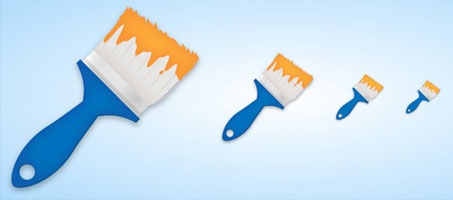We were using PaintShop Pro's Clone Brush and Scratch Remover to fix issues in pictures.
Last week's images were scribbled on by me, and the purpose was to remove the scribbling using the Clone Brush. Its an effective way to get used to the way the tool works, afterall we're not likely to encounter anything this bad with our own images. This week however the images I gave the class, were images were I wanted specific things removed from the photographs. There were nine pictures in total. The time permitted doesnt allow for all nine to be completed in class, but because these images are available online, they are available to be downloaded at home, should anyone want to carry on with them in their own time.
The pictures can be downloaded by clicking on this link.
The first few images were to remove various objects from the pictures. The first example was to remove the clock tower from the Roath Park photo. Others included the removal of a Fisherman, a Lifeguard, a load of Swans, a tree and finally a burnt out car on the Knap beach!
The Burnt Car is shown below, and one of the important things to consider when fixing this picture, is the size of the pebbles. When you look at the photograph the pebbles in the foreground are naturally larger than those that are closer to the sea, so when we are using the clone brush, we need to pay particular attention to the 'lay of the land'. This ensures that the finished picture looks correct, with right sized pebbles where they should be!
| The Burnt Car on the Knap Beach - is a good picture to practice on. |
Good bit of advice: Recognise your mistakes as soon as they happen. You will find it impossible to correct if you let the mistakes build up. Simply click on the Undo button at the top of the screen, or choose Edit and Undo, or alternatively press CTRL and Z on the keyboard.
The remainder of images I had made for download, were images where I wanted the smallest amount of modernisation removed from the pictures. Such as satellite dishes, and that sort of thing. The next step was to make the pictures old fashioned looking, by tinting them with a sepia tone. A very nice touch, is to blur the picture as well. The reason being, is if were are to make people think that the picture is an authentic old fashioned photo, camera's of the day, would not have taken nice crisp and sharp photographs like those of today. So by applying the Blur or Blur More effect gives a very pleasing look to what appears to be an old photograph!
For specific notes on this, click this link. The notes refer to version 8, but should easily translate albeit maybe some slight variations to higher versions such as X3 and X4. They are in Adobe PDF format so you will need to ensure you have Acrobat Reader installed on your computer. If you don't, you can get it from here: http://get.adobe.com/reader/


No comments:
Post a Comment